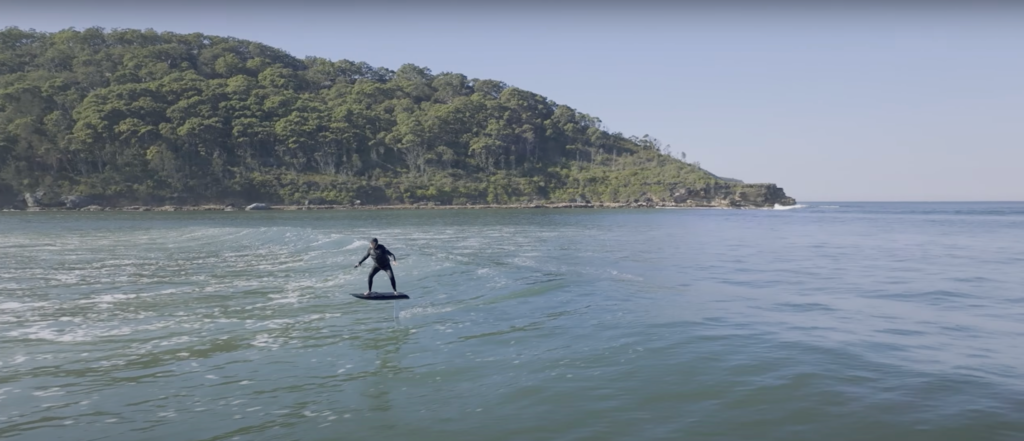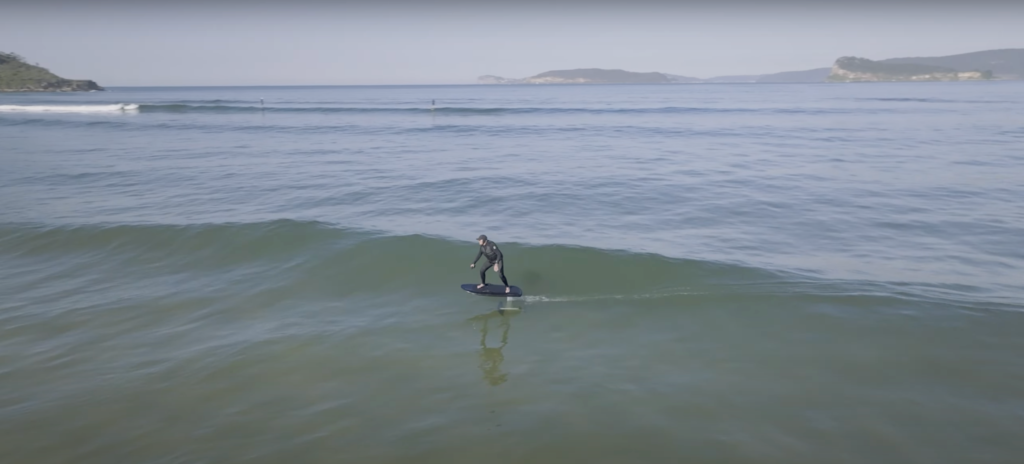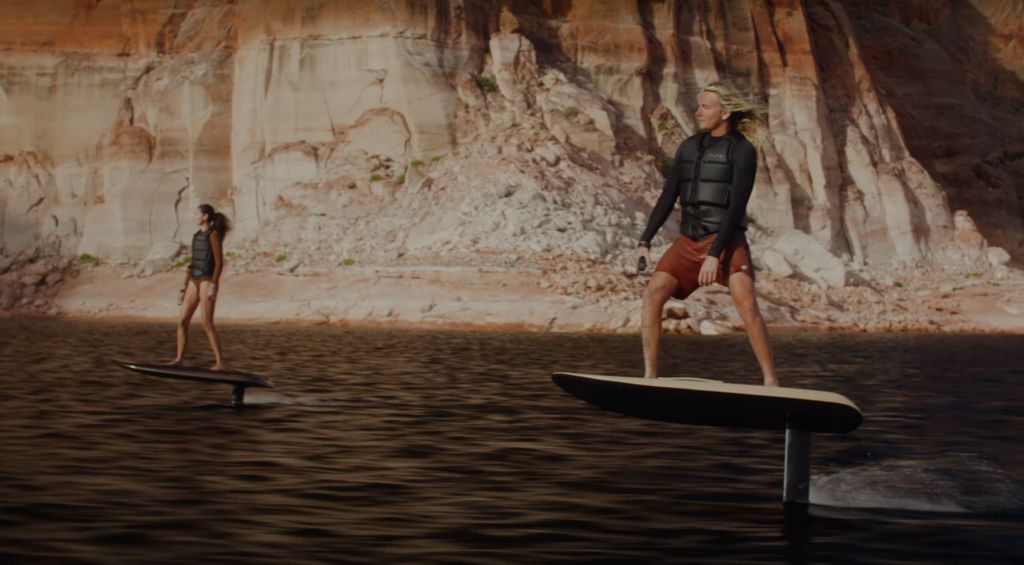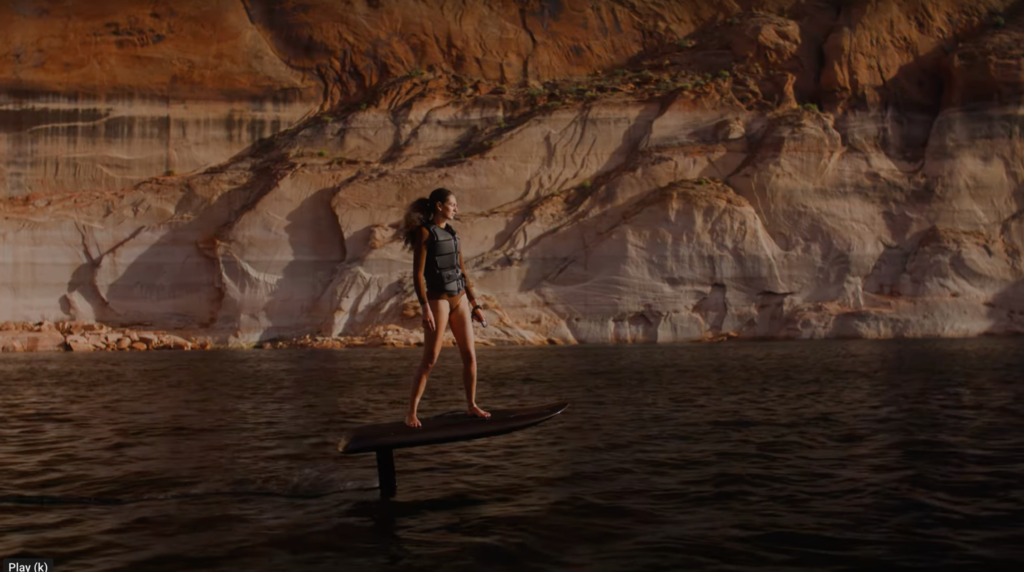

eFoiling is an exciting new sport that expands the possibilities of traditional watersports. Unlike activities dependent on external factors like wind or waves, eFoiling allows you to ride on almost any body of water.
Whether it’s ocean waves, river swells, tiny ponds, city canals, or even small boat wakes, eFoils can handle it all. This flexibility means that eFoils are being used in more diverse environments than ever, bringing unique considerations for you and your equipment. If you’re looking to try it out locally, our Panama City Beach eFoil rentals make it easy to ride in both salt and freshwater conditions without the hassle of ownership.”
One key consideration is the difference between salt and freshwater, especially regarding care, operation, and safety. Understanding these differences can help maximize your eFoiling experience and protect your gear in the long run.
This guide covers everything you need to know about eFoiling in different types of water. If you have any specific questions or need further assistance, please contact our team. We’re here to support you every step of the way.
Table of Contents:

eFoils can be used in fresh and salt water, but there are slight differences in care, operation, and safety that you should keep in mind.
Buoyancy: Salt water is denser than freshwater due to dissolved salts, which makes it more buoyant. This means your board will sit slightly higher in salt water, making it easier to get on foil. This might be particularly noticeable if you’re riding a lower-volume board. The water’s density in salt water can also make the board and wings feel slightly more responsive. We often encourage riders willing to put in the extra time to start with a more advanced board. In the beginning stages, something like the Fliteboard PRO would be easier in salt water. Intermediate to advanced riders looking to upgrade to a board like the Ultra L2 would also benefit from the extra buoyancy. This same logic applies if you chose a more fun intermediate wing like an 1100 wing from the Fliteboard range.
Learning to foil in salt water can be beneficial because the increased buoyancy helps you maintain stability during the early stages of the process. However, some riders argue that freshwater offers less resistance, leading to marginally better battery life. While we haven’t rigorously tested this claim, it’s likely a minor factor that shouldn’t significantly impact your ride time meaningfully. To keep your experience smooth on any trip, our Fliteboard battery Santa Rosa lets you ride without traveling with a spare battery.

Fliteboard is designed to be used in fresh and saltwater, so this is not a point of concern. Regardless, it’s good practice to clean your eFoil regularly after each use.
Corrosion and eFoils: Salt water is highly corrosive and can accelerate wear on various types of equipment. However, eFoils are designed to handle both salt and fresh water without major issues. You should routinely inspect and rinse your equipment after use, especially if you’ve been riding in salt water.
Saltwater Care: After every use, rinse your eFoil thoroughly with fresh water to remove any salt residue. Pay extra attention to joints, seams, and screws where salt can accumulate.
Freshwater Care: Fresh water is less harsh but still requires regular maintenance. Lakes can contain algae, dirt, plant life, and other compounds that might build up on your equipment. We recommend rinsing your gear after every use, though you can stretch this to every two or three uses if you’re riding exclusively in fresh water.
If you want to learn more about eFoil care and longevity, you can read our blog here.
Do I have to worry about Fliteboard in salt water? No, the standard eFoil units use anodized aluminum. The anodizing process creates a thick oxide layer on the mast’s surface, significantly increasing corrosion resistance. An anodized aluminum mast will last longer and maintain its structural integrity, even after prolonged exposure to harsh environments and saltwater. The high-end units like the Mn masts use Japanese high-modulus pre-preg carbon fiber so you can rest easy using them in salt water.

Can I eFoil in a lake or river? Lakes and rivers are perfect for eFoiling, but bear in mind that they often have more recreational users sharing a smaller space, so you must be mindful of other boaters and swimmers. Defensive foiling—assuming that other watercraft may not see you—is an intelligent approach. Always yield to larger, slower vessels and give right of way to unpowered crafts like sailboats and kitesurfers.
Be aware of the water depth and potential hazards just below the surface, such as fallen logs, trees, or old dock pilings. Additionally, dense plant life in some lakes and rivers could tangle up in your prop. Exploring new bodies of water is fun, but assessing the risks beforehand is wise.
Can I eFoil in the Ocean? The ocean offers a dynamic and fun environment for eFoiling but also presents unique challenges. You’ll need to be aware of boat traffic, swimmers, and particularly surfers. Choose your location with consideration. Avoid high-traffic areas. As eFoiling is a relatively new sport, it’s essential to be respectful of surfers in the lineup. We can chase waves effortlessly with our motors, but traditional surfers have to work much harder to catch waves, so giving them space is critical.

Wildlife: The likelihood of encountering sharks while eFoiling is minimal. More people are injured driving to work than by sharks in the ocean. However, it’s essential to recognize that you are in the sharks’ natural habitat. Using common sense—such as avoiding river mouths, known sharky areas, and seasons when sharks are migrating—will go a long way in ensuring a safe experience.
More immediate concerns might be jellyfish, sharp rocks, and coral. Also, remember that tides and currents can change quickly, so stay aware of your surroundings.

Freshwater eFoiling: Lakes and rivers can be calmer and more predictable, making them ideal for beginners. Avoid busy times, such as holidays or weekends, when boat traffic might create challenging conditions for a new rider. It’s difficult to learn in choppy water! Small bodies of water can also make it easier to stay close to shore or keep track of family members. If you run into an issue or your battery runs out, you can usually swim back to shore quickly.
Saltwater eFoiling: Ocean conditions can vary significantly, so always check the local surf report before heading out. Beginners should wait for calm, flat days to practice and gradually work their way into small, unbreaking waves. The ocean’s vastness also means you should never ride out farther than you’re willing to paddle back in, especially considering tides and currents.
Ultimately, eFoiling is fun no matter where you ride. Use this guide to make informed decisions and, most importantly, be safe and enjoy your time on the water. If you’re unsure about your local spot and its suitability for eFoiling, feel free to contact us. And if you’re riding regularly in coastal areas, our efoil storage services Grayton Beach offer a safe and convenient way to keep your gear protected.
If you have any questions about eFoils or need help deciding which is best for you, call (850) 400-8500 or email us at [email protected] for a custom recommendation. We offer eFoil lessons, guided eFoil tours, eFoil demos, storage and delivery options for your eFoils, and more.
Please fill out this form and someone from our team will contact you as soon as possible. You can also reach us by email at [email protected]